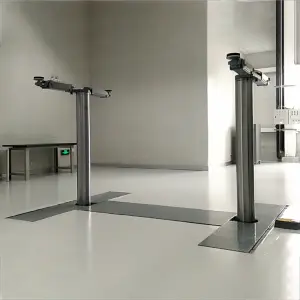
Unlocking the Mysteries of the Cylinder: A Fascinating Journey into Its History and Uses
The cylinder has been one of the most intriguing and useful shapes ever discovered by humans. From ancient times to modern engineering marvels, this simple geometric form has played a significant role in various aspects of our lives. By exploring the history, properties, and applications of the cylinder, we can gain a deeper understanding of its importance and the countless ways it has shaped our world.

Unlocking the Mysteries of the Cylinder: A Fascinating Journey into Its History and Uses
To understand the cylinder’s significance, we must delve into its origins. The earliest evidence of cylinder usage dates back to ancient Mesopotamia, where cylindrical seals were used to create intricate impressions on clay tablets. These seals played a vital role in administrative systems, as they were used to identify and authenticate documents. The simple yet effective design of the cylinder made it the perfect tool for this purpose.
Jumping ahead several millennia, the cylinder’s versatility became evident during the Industrial Revolution. The invention of the steam engine, particularly James Watt’s improved version, relied heavily on the power of cylinders. Cylinders were used as containers in steam engines, enabling the expansion and compression of gases to generate mechanical work. This revolutionary breakthrough paved the way for the advent of modern machinery and transportation, as the steam engine became a cornerstone of the industrial world.
In addition to their role in steam engines, cylinders are also a fundamental component in engineering and architecture. The towering skyscrapers that define modern city skylines owe their structural integrity to the widespread use of cylindrical support columns. The uniform distribution of weight within the cylinder allows it to efficiently support massive loads, making it a reliable choice for creating stable and secure structures.

Unlocking the Mysteries of the Cylinder: A Fascinating Journey into Its History and Uses
Moreover, the cylinder’s mathematical properties have fascinated mathematicians for centuries. With a circular base and a curved surface connecting the two bases, the cylinder boasts distinctive qualities that make it an intriguing subject of study. Mathematicians have derived formulas to calculate the volume and surface area of a cylinder, allowing for precise measurements and calculations in various fields, from engineering to physics.
Interestingly, cylinders also play a crucial role in the field of medicine. Oxygen cylinders, for instance, are instrumental in the delivery of oxygen to patients with respiratory disorders. These portable containers store high-pressure oxygen, enabling medical professionals to administer lifesaving treatment in emergency situations. Additionally, cylinders are used in various medical devices, such as prosthetic limbs and medical pumps, enhancing the quality of life for countless individuals worldwide.
Beyond their practical applications, cylinders have also found their way into art and design. Artists and craftsmen throughout history have incorporated cylindrical shapes into their creations, recognizing the aesthetic appeal and simplicity of this form. From ancient pottery to contemporary sculptures, the cylinder serves as a versatile canvas for artists to express their creativity and generate captivating visuals.
In conclusion, the cylinder leaves an indelible mark on humanity’s journey through time. From the ancient Mesopotamians to the modern era, this seemingly basic shape has played an essential role in shaping our civilization. Whether in ancient seals, steam engines, architectural marvels, or medical advancements, the cylinder’s versatility and functionality continue to contribute to our daily lives. Through its fascinating history and myriad applications, the cylinder remains a fundamental element that connects the past, present, and future of human innovation.New Engery Vehicle Battery Lift
